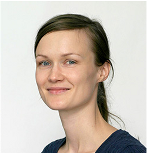Dr. Katja Doerschner and her colleagues received a TUBITAK 1001 grant. The title of the grant is “Assessing structural and functional architecture of the human brain through investigating influences of genetically rooted central nervous system disorders.” Dr. Doerschner summarizes her 3 year plan as:
One of the fundamental insights in the study of the mind has been the concept of cortical functional localization. This idea saw its first scientific support through the seminal work by Paul Broca who discovered that speech production was localized to the left ventroposterior frontal gyrus, and set a milestone in in our understanding of the human cognitive facility of language. His discovery validated the search for specialized cortical areas and processes subserving specific cognitive functions such as memory or object perception. To study the brains of lesioned patients, as pioneered by Broca, in order to gain insights into the function of the healthy human brain has since then been the hallmark of
With the completion of the human genome project and the recent possibilities of highly advanced sequencing technologies (Green et al. 2011) the identification of genes underlying neurodevelomental disorders has become feasible. From the perspective of neuropsychology studying inherited change in the structure or function of the brain have proven as informative to normal cognitive organization as have acquired lesions. Thus, connecting these two links provides a unique opportunity for establishing a connection between gene expression, cortical structure and complex behavior.
In the here proposed work we wish to investigate the visual behavior, structural and functional cortical architecture of an individual with an autosomal recessive single gene mutation (Barak et al. 2011) that causes malformations in occipital cortical development. We conducted preliminary measurements on this cooperative 36 year old female patient, based on which we developed the following three specific aims for this project:
1. Detailed quantitative cortical morphometric measurements
2. General functional and structural connectivity analysis
3. Behavioral and functional experiments examining visual motion perception and visuo-spatial attention
To the best of our knowledge this is the first case that the visual system of such an individual will be examined in depth.
In addition to advancing our understanding how the human mind works, findings of this research will be of high relevance at the community level since they may have direct applications to human health, for example in predicting and diagnosing visual disorders, or by improving treatments through the development of neuroprosthetic devices. The human visual system is unparalleled in its ability to extract meaningful structure from the retinal input. Therefore, understanding how it accomplishes this will also aid the design of artificial intelligent mobile agents and new computing architectures
This project will integrate psychophysical experimentation and functional Magnetic Resonance Imaging (fMRI), with the knowledge gained from genetic analysis, thus our approach will be in line with recent call in Science (Akil et al. 2010) to combine efforts from the fields of genomics and neuroscience in the quest for understanding, treating and preventing neurodevelopmental, neurodegenerative and neuropsychiatric illness.
